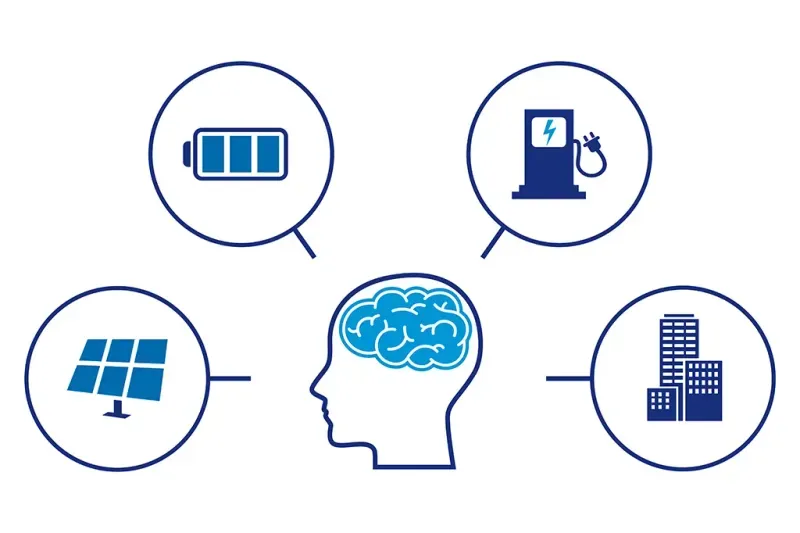Address
304 North Cardinal St.
Dorchester Center, MA 02124
Work Hours
Monday to Friday: 7AM - 7PM
Weekend: 10AM - 5PM
Address
304 North Cardinal St.
Dorchester Center, MA 02124
Work Hours
Monday to Friday: 7AM - 7PM
Weekend: 10AM - 5PM

As businesses look to reduce operating costs and limit their environmental impact, many facility managers are turning to clean onsite energy solutions like solar, battery energy storage, and electric vehicle charging. But there’s a key piece of technology that should be installed in conjunction with these types of assets to maximize financial returns: an energy management system (EMS). Here’s a primer on what an EMS does, why it’s important, and what to look for when considering one for your facility.
Contact us for a free PowerFlex X™ demo.
An intelligent energy management system is a collection of computer-aided tools that monitor, control, and optimize the performance of Distributed Energy Resources (DERs), which are technologies that generate, store, and/or dispatch energy where it is consumed. Common DERs include solar photovoltaic (PV) arrays, battery energy storage systems (BESS), and electric vehicle (EV) charging stations.
Energy management systems have both hardware and software components. At the heart of an EMS is the energy management system controller. Physically installed on site, the EMS controller is a device that maintains communication with the DERs and collects real-time data on their operation. Data is fed into cloud-based software, which processes information in real time and continually optimizes the DERs based on how much energy is being generated and consumed at the facility. Historical data is also stored in the cloud and made available for reporting purposes.
An EMS controls and optimizes DERs to maximize energy production, utilization, and savings. For example, EMS software coordinates the storage of surplus solar energy during the day to power building loads in the early evening hours, when utilities tend to charge the most for electricity due to increased customer demand on the grid. By using stored energy in this way — a cost-saving strategy called time-of-use arbitrage — a business is able to shave its monthly energy bills while also easing its reliance on harmful fossil fuels and reducing its carbon footprint in the process.
In addition to curbing a company’s carbon emissions, clean energy assets like solar and energy storage systems can reduce operating costs. By strategically using electricity that’s generated and stored on site, facilities can limit utility energy consumption and monthly charges. However, these financial benefits can only be fully realized if all onsite assets are working together as efficiently as possible. This is where an effective energy management system comes in.
One of the most important things to keep in mind when considering an energy management system for your property is how your energy needs are likely to evolve over time. You may only have a few rooftop solar arrays now, but what happens when you want to install a storage system or EV charging stations in the future, or layer on microgrid infrastructure to increase your resiliency against utility disruptions? That’s why choosing an intelligent EMS that is built for scalability and can adapt to changes is critical for optimizing all your onsite energy assets and facility consumption. Transparency is also key — robust system data is only as useful as it is accessible.
At PowerFlex, we take a holistic approach to energy management with PowerFlex X™ — our adaptive energy management platform that provides real-time insights and intelligent control of all your Distributed Energy Resources.
Ready to see what we can do for you? Contact us today!
Click one of our contacts below to chat on WhatsApp